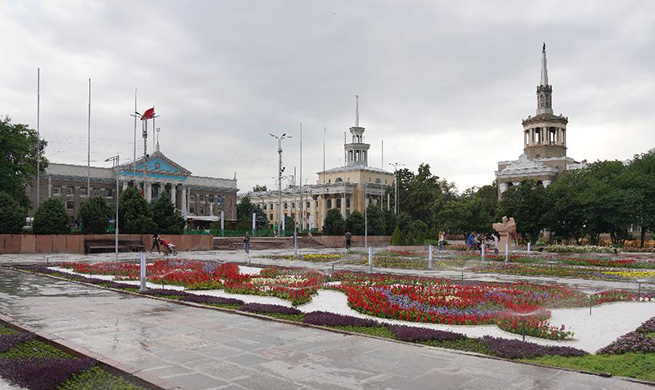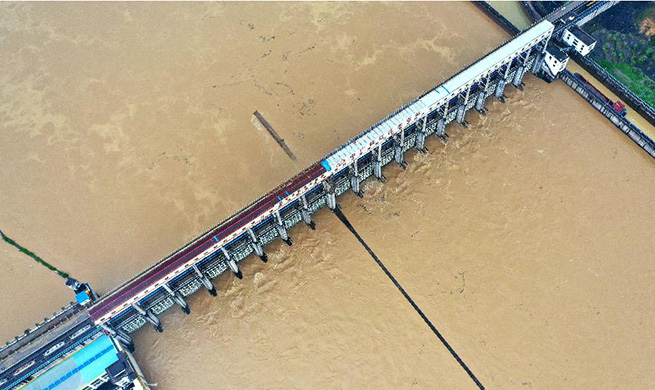CHICAGO, June 10 (Xinhua) -- Researchers at the University of Michigan (UM) forecast that the hypoxic zone or "dead zone" in the Gulf of Mexico this summer will be approximately 7,829 square miles, roughly the size of Massachusetts.
The 2019 forecast is close to the record size of 8,776 square miles set in 2017 and larger than the five-year average measured size of 5,770 square miles.
The National Oceanic and Atmospheric Administration (NOAA) released this annual forecast on Monday based on U.S. Geological Survey (USGS) river flow and nutrient data.
A major factor contributing to the large dead zone this year is the abnormally high amount of spring rainfall in many parts of the Mississippi River watershed, which led to record high river flows and much larger nutrient loading to the Gulf of Mexico. In the past May, discharge in the Mississippi and Atchafalaya rivers was about 67 percent above the long-term average between 1980 and 2018, according to USGS.
USGS estimated that larger-than-average river discharge carried 156,000 metric tons of nitrate and 25,300 metric tons of phosphorus into the Gulf of Mexico in May 2019 alone. These nitrate loads were about 18 percent above the long-term average, and phosphorus loads were about 49 percent above the long-term average.
NOAA issues a dead zone forecast each year and refines the models used by the Hypoxia Task Force to set nutrient reduction targets and better understand the link between hypoxia and nutrients.
An NOAA-supported monitoring survey will confirm the size of the 2019 Gulf dead zone in early August, a key test of the accuracy of the models.
"The models help predict how hypoxia in the Gulf of Mexico is linked to nutrient inputs coming from throughout the Mississippi River Basin," said Steve Thur, director of NOAA's National Centers for Coastal Ocean Science. This year's historic and sustained river flows will test the accuracy of these models in extreme conditions, which are likely to occur more frequently in the future, according to the latest National Climate Assessment.
While nutrient inputs to the Gulf of Mexico vary from year to year because of natural swings in precipitation and discharge, USGS also tracks longer-term gradual changes in nitrate and phosphorus loading into the Gulf of Mexico from the Mississippi River.
Hypoxic zone or "dead zone" refers to an area of low to no oxygen that can kill fish and other marine life. It occurs in the Gulf of Mexico every year, and is primarily caused by excess nutrient pollution from human activities, such as urbanization and agriculture, occurring throughout the Mississippi River watershed.












